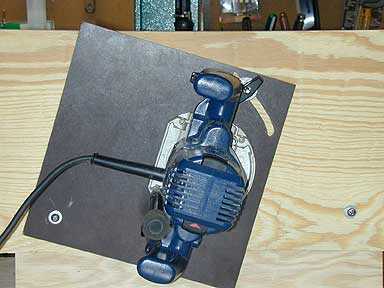Does anyone have or has anyone ever used a horizontal router table? I saw a picture of one in an ad in Wood Mag and I'm considering making one. My reasons are:
Easier access to router for changing bits, depth adjustments, etc.
Easier height adjustment.
It seems like it would be pretty easy to make raised panels with this using a vertical bit.
Here's a picture of the one that I was going to copy. They only want $189 for it, I think that's pretty cheap.

Easier access to router for changing bits, depth adjustments, etc.
Easier height adjustment.
It seems like it would be pretty easy to make raised panels with this using a vertical bit.
Here's a picture of the one that I was going to copy. They only want $189 for it, I think that's pretty cheap.




